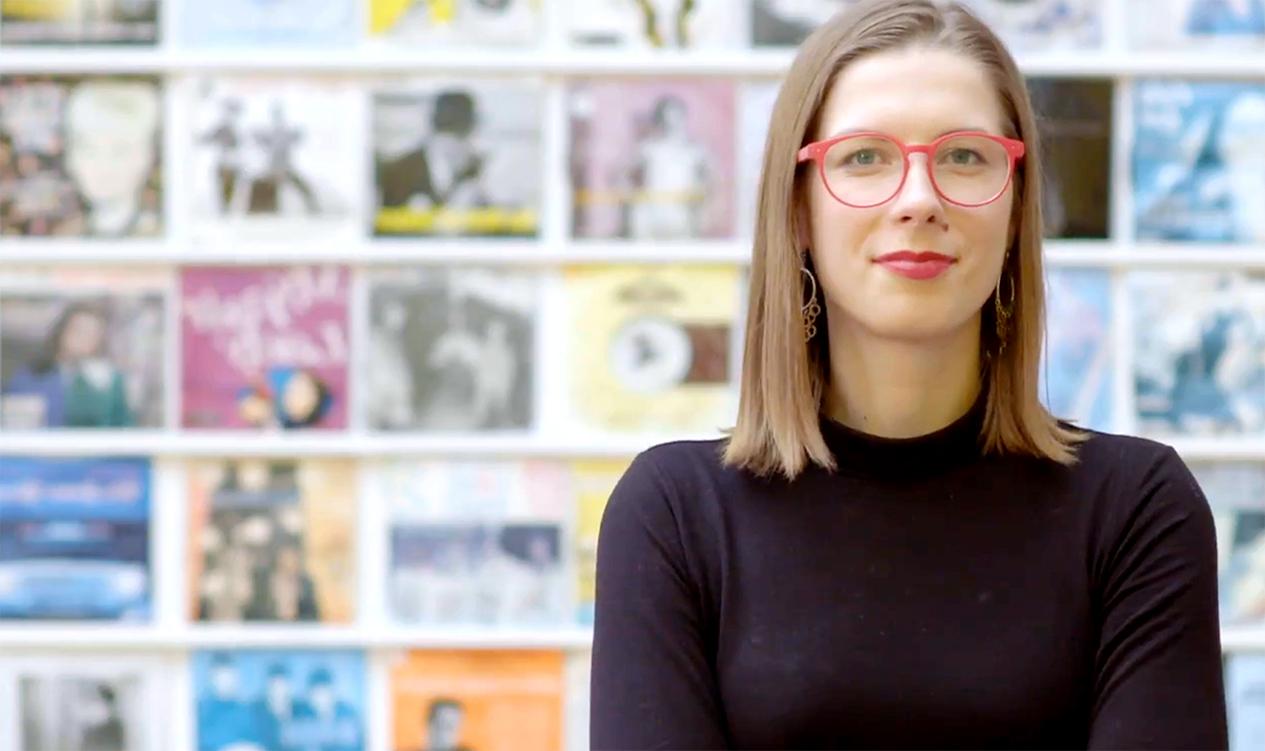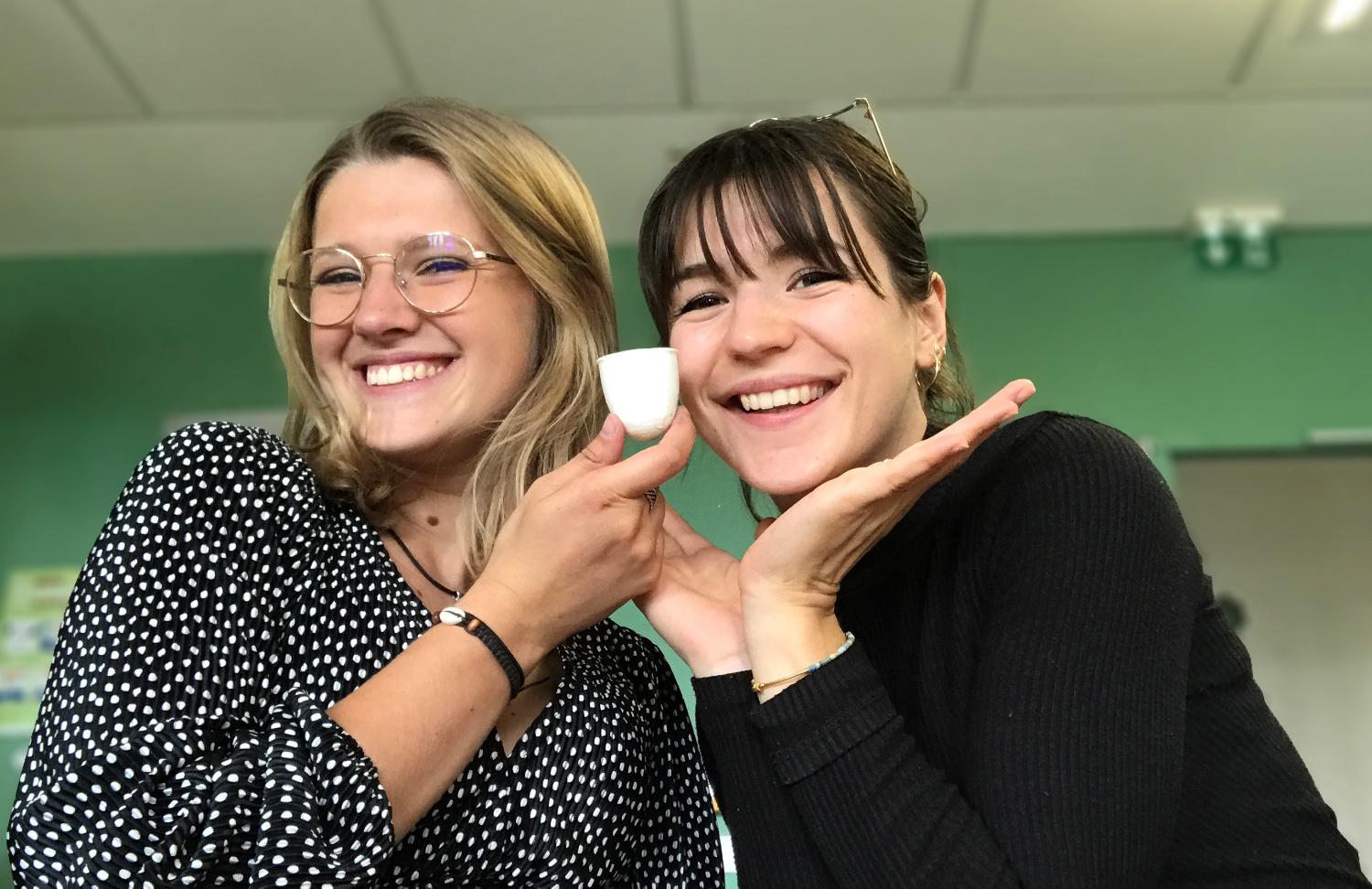
.jpg?$responsive$)
James Dyson Award heroes International Women in Engineering Day
International Women in Engineering Day (INWED) is a day to celebrate Engineering Heroes pioneering in their fields. With just one week to go until entries for the 2021 James Dyson Award close, we spoke to previous female winners of the Award. Learn more about their game-changing future technologies and hear about their advice to encourage fellow young women to find solutions to the world’s biggest problems.
23 June 2021
Solveiga Pakstaite, Inventor of Mimica Touch and 2014 James Dyson Award UK winner
James Dyson Award past winners
The James Dyson Award has given many women a platform to pursue their inventions full time, with the majority progressing their R&D and commercialising their products. We caught up with a selection of them, including our two past International winners, to hear how they’re shaping the world.
-
Judit Giro Benet
A new biomedical device for breast cancer screening, using urine and AI.
Maria Yzabell Angel Palma
A new kind of cooling technology that doesn't use chemical refrigerants.
Solveiga Pakstaite
Packaging labels that turn bumpy when food spoils.
Why did you get into engineering and design?
Aoife: I definitely was not the kid taking apart a remote controller and rebuilding it, but I did have a fascination in understanding how something went from a raw material to an end product. Be that a table, home appliance or your skin care! When I realised engineers were involved along the entire product journey, I thought ‘Could there be a more fascinating job to have?’. As an engineer we’re involved in creating the world around us, and hopefully making it a better place.
Charlyne: I wanted to be an engineer because its purpose is to design products or services to make people's lives easier and better. I have always wanted my job to have meaning in society and be useful to everyone.
Auxane: I didn’t know what my dream job could be growing up. I didn’t really know what I was looking for. I chose to study engineering to help me better understand what I wanted to do. I’ve been studying it for two years and design is now an area that truly fascinates me.
Amanat: Shubham and I grew up in New Delhi and always knew we were interested in design, but neither of us were aware of what industrial design was all about until we got to Parsons School of Design in New York. What we both love most about industrial design, and what drew us to it, was that it was about problem solving. It challenged our perception that design was more than aesthetics, but about functionality and aesthetics in equal parts which was exciting.
-
Why would you encourage young girls to pursue engineering or design?
Shubham & Amanat: We’d encourage young girls to pursue degrees in engineering or design as it’ll get them closer to creating, quite literally, the world that you want to live in. We’d encourage young girls to follow their passions and learn about all the options instead of following stereotypical paths. We didn’t know what Industrial Design was growing up, and following this lesser-known path has allowed us to make our dreams come true.
Agnes: For the world to continue developing new technologies for every industry, we need to continue to educate and encourage the best scientists, engineers and designers. Research shows that females have high levels of empathy. We want future products to be usable, scalable, and attractive for all. It’s essential that we continue to encourage young girls to recognise the rewarding applications of design, both as a craft and strategy to real world situations.
Katherine: When we encourage women into engineering and design, we’ll get new ideas and perspectives that were never thought possible or considered in the past. If you see a young woman in STEM looking to do something different, support them in whatever way you can. It will help encourage more women into this field, and ultimately leadership roles.
Maria: Engineering and design, for me, doesn’t have a gender. Women are known to be observant, meticulous, and creative. I believe that every woman has the power to create better concepts and pioneering technology. It’s only a matter of us believing in ourselves and supporting each other!
Aoife: Over 50 per cent of the global population are women. Yet a much smaller percentage of the engineers or designers in the world are women. A lot of the inventions designed across the world are not actually suitable for half the population. With more women and young girls being involved in early stages of design and engineering, the world will become a much more inclusive, cooperative and functional space.
-

Above: SoaPen in action, invented by Amanat Anand and Shubham Issar. Auxane Caseiro and Charlyne Kerjean working on their invention Tuli, an innovative menstrual cup.
-
.jpg?$responsive$&cropPathE=desktop&fit=stretch,1&fmt=pjpeg&wid=1152)
Above: Agnes Xue using her invention, Luna.
-
What does this year’s INWED theme of ‘engineering heroes’ mean for you?
Agnes: This year’s INWED theme celebrates women in engineering whose actions may not be the ones that make the headlines, but they are the best, brightest and toughest engineers. They may not be in the limelight but are the ones who work hard in the background, who dare to pilot solutions and create breakthroughs.
Charlyne: This year’s theme reminds me of the film “Hidden Figures”. It highlights the women who worked in the shadows but were the root of many of our daily inventions. And events like INWED enable us to show the importance of having women in engineering today.
Lucy: INWED is all about showcasing current examples of women pioneering solutions regularly to send a message that women are not just capable but excelling.
-
Why did you enter the James Dyson Award?
Solveiga: I was encouraged to apply by someone who saw potential in my idea. I never expected to win the James Dyson Award but it really propelled my business into existence. There can’t be a better sign for someone to apply than that, take it from me!
Katherine: The Award gives young women a voice for their invention and a platform to break into the industry. It gave me the opportunity to pursue Respia full time as a start-up through educating the world about what’s possible for asthma management if you put resources behind it.
Lucy: Crucially the James Dyson Award is uniquely focused on supporting inventions just out of university in the early stages. If you have sketches, initial ideas or prototypes, submit your application – the Award is looking for an idea that solves a problem, not the final product!
Amanat: At university the James Dyson Award was introduced to us in our classes. We were always encouraged to enter by our professors but didn’t think we stood a chance at being recognised, let alone receive a prize. The Award is well respected in the industrial design world, and we’re honoured to be a part of the group of amazing other winners through this Award.
-
.jpg?$responsive$&cropPathE=desktop&fit=stretch,1&fmt=pjpeg&wid=768)
Above: Judit Giro Benet working on her winning invention, The Blue Box.
Judit: I was motivated to take The Blue Box from being a prototype to a product people could use. To progress my at-home biomedical device for breast cancer screening, I needed to improve our algorithm and fully understand the physiology of the female body. Another consideration was whether the design was intuitive and practical enough for the user. The prize money and exposure from winning the James Dyson Award last year gave me a platform to focus and develop answers to these vital questions through further research and development.
-
Want to follow in their footsteps? Submit your idea to the James Dyson Award.
The 2021 James Dyson Award closes for entries on June 30. Find out more about how to enter here .
Throughout this year’s Award, stay up to date with how past winners are engineering our futures on the James Dyson Award Instagram page and the Dyson Newsroom.
-
Engineering Hero Technology
Discover the engineers behind Dyson's hero technology
Read more about the inspiring female engineers behind iconic Dyson technology this International Women in Engineering Day and hear their advice of the next generation of #EngineeringHeroes.
-
%20(1).jpg?$responsive$&cropPathE=desktop&fit=stretch,1&fmt=pjpeg&wid=960)
Dyson Institute Engineering Heroes
Online Webinar: A Day in the Life of a Dyson Institute Student
To mark International Women in ENgineering Day 2021 , join us online to find out what it’s like to be a student at the Dyson Institute, hosted by Dyson Undergraduate engineers. The event is free and focused towards inspiring young women in Years 10-13 to pursue careers in STEM.
Press contacts
-
Marianne Chick
-

.jpg?$responsive$)





.jpg?$responsive$)




.jpg?$responsive$)
.jpg?$responsive$)
 (1).jpg?$responsive$)

